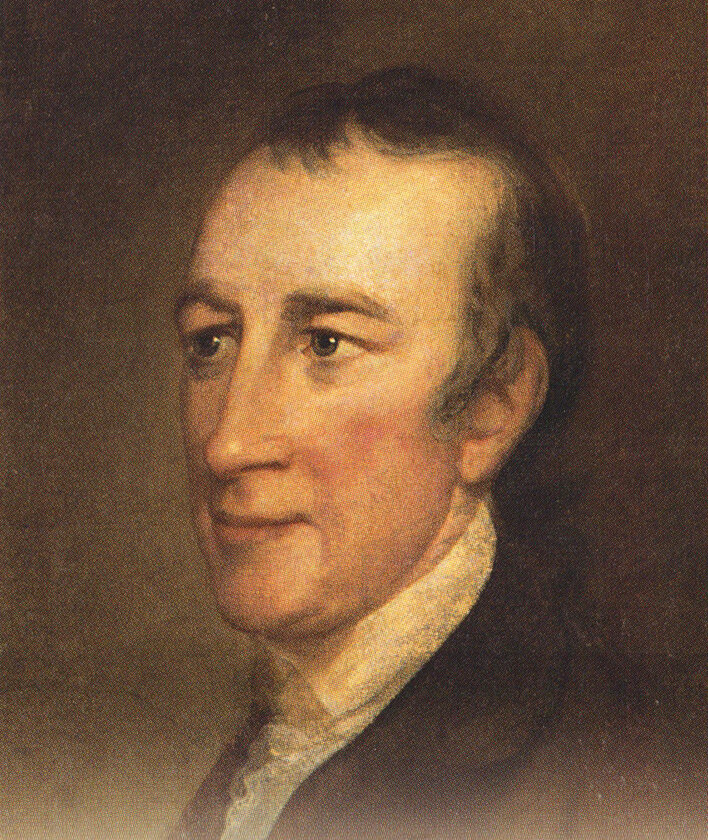
Thomas Stone
Maryland
Thomas Stone was born at Poynton Manor in Charles County, Maryland in 1743. His thirst for knowledge is readily seen in his desire to attend the school of Mr. Blaizedel. His father consented and young Thomas would ride more than ten miles to the school and make the return trip home every day. Under the tutelage of the Scotsman, he learned Greek and Latin.
In the early 1760s, Thomas Stone studied law under Thomas Johnson in Annapolis, Maryland. He was admitted to the bar in 1764 and moved to Frederick to establish his law office. In addition to providing counsel to his clients, Mr. Stone was also a circuit court judge whose circuit included Frederick, Annapolis, and Philadelphia. His travels to fulfill his judicial duty were exhausting and dangerous. Despite having two demanding roles, Thomas Stone succeeded in building his law practice and in becoming more involved in his state’s political affairs.
During the period before the colonies declared independence from England, an interesting situation took place in a lawsuit involving a poll tax and clergy dispute. Thomas Stone represented one side of the case while the other side was represented by a team of lawyers, which included Samuel Chase and William Paca. Of course, the three of them would eventually be selected to be delegates to the Continental Congress and would sign the famous document.
Before their work began in Philadelphia, Thomas Stone would, in incremental steps, become a force for patriotism in the region. One might say he was a conflicted person about the trajectory of the relationship between the colonies and the crown. He was a man who spoke more with his work and less with his words and desired both parties to reach a compromise and avoid war. In 1774, he was appointed to the Charles County Committee of Correspondence, a network that facilitated communications about revolutionary occurrences, strategy, etc.
At this point in time, Mr. Stone had become a vocal opponent of Britain’s trampling on the colonists’ constitutional rights. This appointment and his work for the committee expanded his sphere of influence. A year passed and he was selected to the Second Continental Congress. He joined other delegates on July 5, 1775 in signing the Olive Branch Petition, which was the colonies last official effort by the Congress to appeal to King George III directly to bring reconciliation between the two sides. It was a failed attempt.
The inevitable action of separating formally from England was finally accepted by the Maryland Convention a few days prior to the vote on Richard Henry Lee’s resolution for independence on July 2nd . The convention gave the delegates to the Continental Congress the permission to vote for the resolution. Thomas Stone was one of the youngest delegates, 33 years of age, to vote for the Declaration of Independence on July 4th. He signed the document on August 2nd.
Mr. Stone’s sentiments about the historical moment are known through his thoughts shared with the Maryland Council of Safety: “May God send Victory to the Arm lifted in Support of righteousness, Virtue & Freedom, and crush even to destruction the power which wantonly would trample on the rights of mankind.”
Tragedy struck in 1787 that changed Thomas Stone and affected his health in a grave manner. In the late 1770s, Mr. Stone’s wife, Margaret, had received a smallpox inoculation. The mercury in the vaccine adversely affected her health and it declined over the next decade. From a letter he wrote, one can understand the depth of love and care he had for his wife, “The illness of a wife I esteem most dearly preys most severely on my Spirits …” It is recorded he “watched over her with unwearied devotion.” She died in 1787.
Thomas Stone’s health began declining and he never recovered. He had no interest in his work. For instance, he was selected to represent Maryland at the Constitutional Convention, but he did not attend. His doctors believed a sea voyage would help improve his condition. He traveled to Alexandria, VA where he would board a ship bound for England. While waiting for the vessel, he died suddenly on October 5, 1787.
Thomas Stone lived to be 44 years of age.

